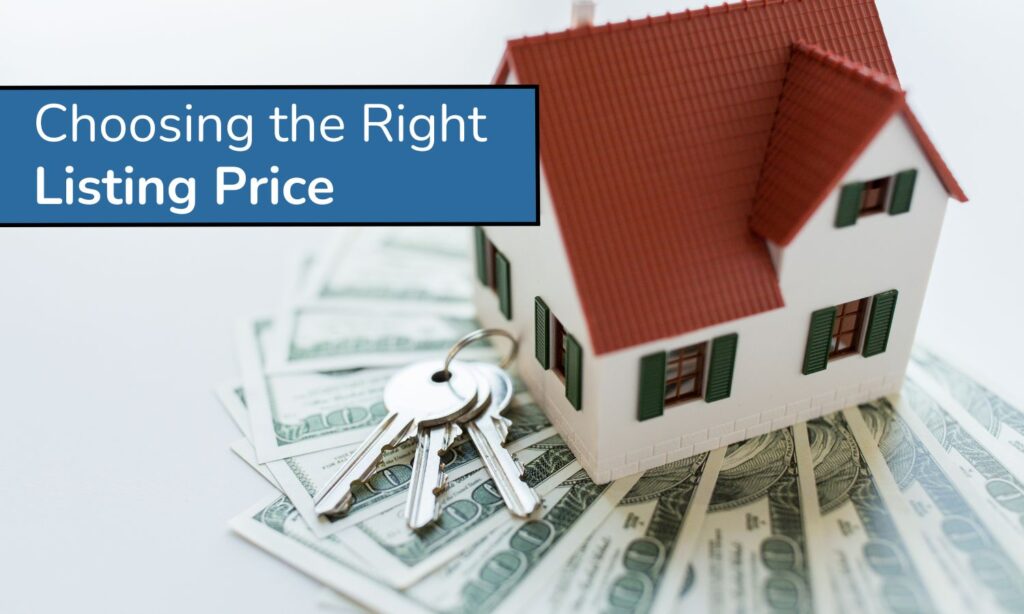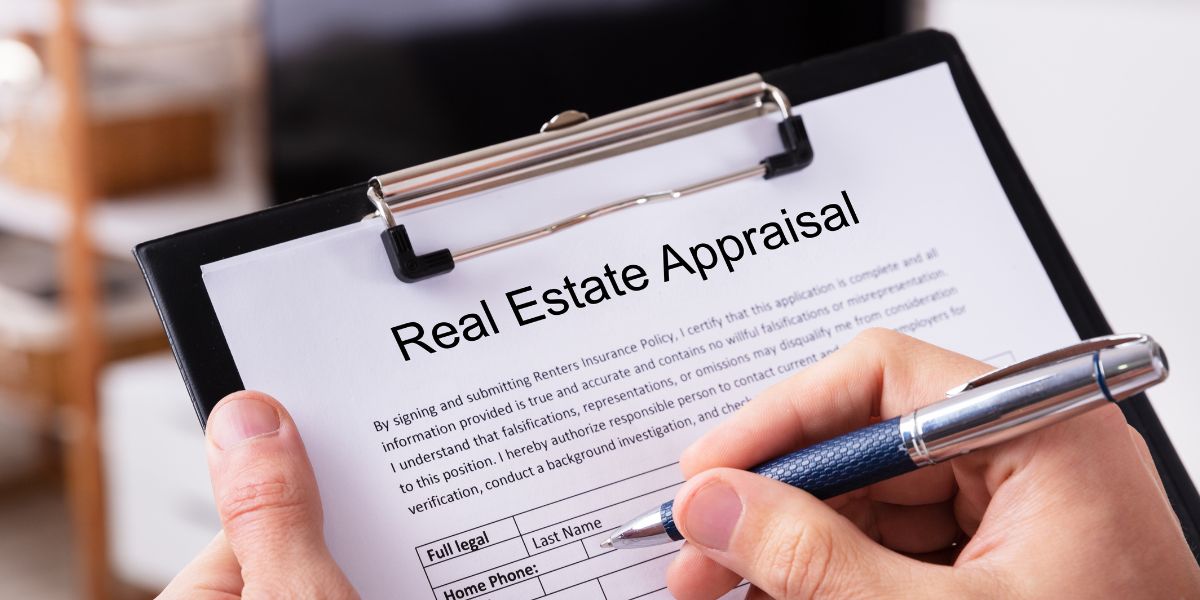When it comes to selling your house, one of the most critical decisions you’ll face is setting the right listing price. It’s a delicate balance; if the price is too high, you risk alienating potential buyers, leading to a stagnant listing that lingers on the market. If the price is too low, you might sell your home quickly but also leave significant money on the table. The listing price not only influences how long your property stays on the market but also affects the final sale price and the overall success of the transaction.
The goal is to attract serious buyers and generate competitive offers, making the sale as smooth and profitable as possible. In the following sections, we’ll explore how to understand the market, evaluate your home’s worth, and strategically set a listing price that aligns with your selling objectives.
Understanding the Market
The real estate market is dynamic, influenced by various factors that can change from one season to the next. Understanding these fluctuations is crucial in setting a listing price that reflects both the current market’s demands and the inherent value of your property. Here’s how to gauge the market to price your house competitively:
Current Market Conditions
Market conditions play a pivotal role in determining your listing price. In a buyer’s market, where the supply of homes exceeds demand, buyers have more options and bargaining power, which may require you to set a more competitive price to attract interest. Conversely, in a seller’s market, where demand outstrips supply, you might price your home more aggressively, taking advantage of the limited availability to fetch a higher selling price.
Comparative Market Analysis (CMA)
A Comparative Market Analysis (CMA) is an indispensable tool in understanding local market trends and pricing your home correctly. A CMA involves comparing your property to similar homes in your area that have recently sold, are currently on the market, or were listed but didn’t sell. By examining these comparisons, you can identify a price range that reflects the current market conditions and the unique attributes of your home. Factors such as location, size, condition, and upgrades are considered to ensure a fair comparison.
Factors Influencing Listing Price
Determining the right listing price for your house is not solely about understanding the market; several key factors directly influence how you should price your home. Each of these factors plays a crucial role in attracting potential buyers and achieving a successful sale.
Location
The adage “location, location, location” holds true in real estate. The location of your property is one of the most significant determinants of its value. Homes in desirable neighborhoods, with access to top-rated schools, convenient amenities, public transportation, and attractive views, can command higher prices. Conversely, properties in less favorable locations may need to be priced more modestly to attract interest.
Property Condition
The condition of your home significantly impacts its appeal to potential buyers. A well-maintained home that’s move-in ready can often justify a higher listing price because it makes moving in easier. Recent upgrades, such as renovated kitchens or bathrooms, new roofs, or updated HVAC systems, add value to your property and should be reflected in the price. On the other hand, homes that require extensive repairs or renovations might need to be listed at a lower price to account for the additional investment buyers will need to make.
Economic Indicators
Broader economic conditions can also influence your listing price. Interest rates, for example, affect buyers’ purchasing power. Lower interest rates can increase the number of potential buyers in the market, possibly allowing for a higher listing price. Conversely, high interest rates may reduce buyer demand, necessitating a more competitive pricing strategy. Employment rates and overall economic health in your area can also impact how much people are willing to spend on a new home.
Comparable Sales
Analyzing sales of similar homes in your area, often referred to as “comps,” is critical for setting a realistic listing price. Look at the final sale prices of homes that are similar in size, condition, and location to yours that have sold recently. This comparison gives you a benchmark for what buyers are willing to pay for properties like yours. It’s important to consider the trend of these sales as well; if prices are increasing, you may be able to set a higher listing price, but if the market is cooling, you might need to adjust your expectations accordingly.
Starting High vs. Reasonable Pricing
There’s often a temptation for sellers to start with a high listing price, thinking it gives room to negotiate or to test the market. However, this strategy can backfire. Overpriced homes may deter potential buyers, prolong the time your property stays on the market, and eventually lead to price reductions, which can stigmatize a listing. On the other hand, setting a price that’s aligned with the market from the start can attract immediate interest and, in some cases, even trigger a bidding war, potentially driving the price above your initial listing.
Flexibility and Market Response
It’s essential to remain flexible after setting your listing price. The market’s response to your listing—be it rapid interest, offers, or feedback from home showings—can provide critical insights. If the interest is lower than expected, it may indicate the need for a price adjustment. Conversely, if you’re receiving multiple offers quickly, it might suggest your price could have been set higher. Being prepared to adjust your strategy based on real-time feedback is key to navigating the sale process successfully.
Preparing for Adjustments
Setting the right listing price from the start is crucial, but the real estate market is dynamic, and flexibility is key. Being prepared to adjust your listing price based on market feedback and the interest (or lack thereof) from potential buyers can make the difference between a sale and a stale listing. Here’s how to navigate the need for adjustments.
Market Feedback
After listing your home, pay close attention to the feedback from potential buyers and real estate agents during showings and open houses. Are visitors commenting on the price being too high for the home’s condition or location? Is your online listing generating a lot of views but few inquiries or showings? This feedback can be invaluable in gauging whether your initial listing price aligns with buyer expectations and market realities.
If feedback suggests that the price is a barrier, it may be time to consider a reduction. However, timing is everything. Dropping the price too soon could signal desperation, while waiting too long might lead to a stale listing. Analyze the feedback carefully and consult with your listing agent to make an informed decision.
Incremental Adjustments vs. Significant Drops
Deciding between making incremental price reductions or a significant drop depends on the market feedback and how far off your initial price might be from market expectations. Small, incremental adjustments can help fine-tune the price without signaling a major issue to buyers. In contrast, a significant price drop might be necessary if your home is substantially overpriced compared to similar properties or if you need to quickly stimulate interest due to changing circumstances.
Tools and Resources
Successfully navigating the complexities of setting and adjusting your listing price requires access to the right tools and resources. These can provide valuable insights into the market, help you understand your home’s value, and guide your pricing strategy. Here are some key tools and resources to leverage during the home selling process.
Professional Appraisals
A professional home appraisal can offer an unbiased assessment of your home’s value. Appraisers consider various factors, including the property’s location, size, condition, and recent comparable sales in the area, to determine its market value. While an appraisal is often required by buyers’ lenders during the sale process, obtaining one beforehand can give you a solid benchmark for setting your listing price and negotiating with potential buyers.
Online Valuation Tools
Online valuation tools, such as Zillow’s Zestimate or Redfin’s Estimate, use automated valuation models (AVMs) to provide an estimated market value for your home based on public records and user-submitted data. While these estimates can be a helpful starting point, they should not be used in isolation. Their accuracy can vary based on the data available for your area and specific property, so it’s important to complement these tools with professional appraisals and advice from real estate agents.
Local Market Reports
Many real estate websites and agencies publish local market reports that provide insights into current market conditions, including average selling prices, days on market, and inventory levels. These reports can help you understand broader market trends and how they may impact your selling strategy.
Conclusion
Choosing the right listing price for your home is a nuanced decision that significantly influences the success of your sale. It’s a delicate balance between understanding the market, recognizing the unique value of your property, and navigating the emotional journey of selling a home. As we’ve explored, setting an effective listing price involves much more than simply picking a number. It requires a deep dive into market conditions, a thorough analysis of your home’s attributes compared to similar properties, and an understanding of buyers’ behaviors and expectations.
Leveraging professional appraisals, the expertise of real estate agents, online valuation tools, and local market reports can empower you with the knowledge and confidence needed to set a competitive and realistic listing price.




